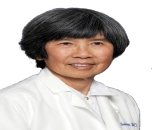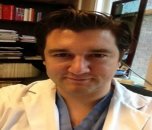Day 1 :
Keynote Forum
Madalene C Y Heng
David Geffen School of Medicine at UCLA, USA
Keynote: Acne and rosacea: Update on pathophysiology and treatment
Time : 11:05-11:50

Biography:
Madalene Heng, MD, FRACP, FACD, FAAD is Clinical Professor of Medicine/Dermatology at the David Geffen UCLA School of Medicine. From 1979 to 2003, she was Chief, Division of Dermatology, UCLA San Fernando Valley Medicine Program. She is currently in private practice in Camarillo, CA at Heng Medical, 500 Paseo Camarillo, Suite 100, Camarillo, CA 93010. (805) 484-1033. www.hengmedicalinc.com. Dr. Heng is a reviewer for the Journal of the American Academy of Dermatology, American Journal of Geriatric Medicine, British Journal of Dermatology, Lancet, London, and International Journal of Angiology. She is author of more than 140 scientific publications, including 78 published peer-reviewed articles on topics such as phosphorylase kinase activity and psoriasis, pathophysiology of common skin diseases, and wound healing, A practicing research dermatologist, Dr. Heng is able to link treatment of diseases to their etiology at the basic science level. She is a strong proponent of use of naturally derived curcumin as complementary treatment of skin disease, and believes that skin health is achieved by not only making important product choices, but lifestyle choices as well.
Abstract:
Understanding the pathophysiology of acne and rosacea is the basis not only for successful treatment but also for prevention of recurrent disease. Acneiform lesions are due to blocked follicles (follicular plugging). This results in failure of drainage of sebum to the skin surface and promotes accumulation of bacteria (P. acnes) and yeasts (Pityosporum ovale). The resultant neutrophilic chemotaxis promotes the formation of microabscess, cysts and scarring. The follicular plugging is also aggravated by sebaceous hyperplasia. In rosacea, cytokine-induced photosensitivity predominates with accompanying sebaceous hyperplasia aggravating follicular plugging and pustule formation. Successful treatment of both diseases includes a regimen aimed at unplugging the plugged follicles, control of pustule and abscess formation and resolution of acneiform scarring and shrinkage of sebaceous hyperplasia.
Understanding the pathophysiology of acne and rosacea is the basis not only for successful treatment but also for prevention of recurrent disease. Acneiform lesions are due to blocked follicles (follicular plugging). This results in failure of drainage of sebum to the skin surface and promotes accumulation of bacteria (P. acnes) and yeasts (Pityosporum ovale). The resultant neutrophilic chemotaxis promotes the formation of microabscess, cysts and scarring. The follicular plugging is also aggravated by sebaceous hyperplasia. In rosacea, cytokine-induced photosensitivity predominates with accompanying sebaceous hyperplasia aggravating follicular plugging and pustule formation. Successful treatment of both diseases includes a regimen aimed at unplugging the plugged follicles, control of pustule and abscess formation and resolution of acneiform scarring and shrinkage of sebaceous hyperplasia.
- Skin and Infectious Diseases | Dermatologic Surgery | Therapies for Skin Disorders | Genodermatosis | Diagnostic and Clinical Analysis | Dermatological Diseases
Location: Fraser North

Chair
Pieter Spee,
FibroTx LLC, Estonia

Co-Chair
Devashri Mukherjee
Decision Resources Group, India
Session Introduction
Pieter Spee
Chief Technology Officer FIBROTX Innovations for skin Europe
Title: Towards skin point-of care devices for personalized skin treatment based on non-invasive biomarker measurements directly from the skin surface

Biography:
Pieter Spee has received his PhD in immunology from the Netheralands Cancer Institute/University of Leiden (NL). While at Novo Nordisk, he made significant contributions to Lirilumab and Monalizumab, both currently in phase II clinical development by BMS and AstraZeneca in collaboration with Innate Pharma, respectively. As a Director and Scientific Director he was heading up preclinical translational research at Novo Nordisk. In 2012, he founded PS! Pharmaconsult, offering expert advise on drug and medical device development through a unique 360 degrees patient centric approach. Currently, he functions as chief technology officer at FibroTx LLC, developing two highly innovative skin diagnostic devices, TAP and SELF, allowing personalized medicine in skin care and clinical dermatology.
Abstract:
Diagnosis of chronic skin inflammation is largely performed by visual assessment, for instance by judging the shape, pattern, position, thickness, redness and scaling of skin lesions on the body. These phenotypic characteristics are typically end-products of the underlying biological processes responsible for disease. Despite the unquestionable value of visual assessment for treatment decisions and patient monitoring, more detailed analyses methods are needed for answering the unmet medical need for offering personalized medicine to patients, e.g., methods that can be used for selection as well as fine-tuning of treatment. Proteins that play a crucial role in skin inflammation, such as cytokines and chemokines, form the molecular root of inflammation and thus have tremendous value for catering personalized medicine in the form of biomarkers. Skin biomarker measurements are typically performed on skin material obtained through invasive procedures and analyses are typically costly and elaborate. FibroTx TAP and SELF are novel molecular diagnostic platform technologies for biomarker measurements directly from skin. These platform technologies are currently being tested in clinical studies for the development of skin diagnostic tools that can objectively assess the disease activity status of skin lesions. The aim of the studies is to develop practical point-of-care devices that can markedly improve skin treatment, which is cost-efficient and does not require the need for extensive clinical laboratory expertise.
Colin P White
Surrey Memorial Hospital, Canada
Title: Local skin flap utilization for cutaneous malignancies: A practical approach for success to reconstruction

Biography:
Colin P White is a Plastic Surgeon in British Columbia, Canada. His clinical practice includes skin cancer surgery, hand surgery and congenital & trauma reconstruction.
Abstract:
The approach to superficial melanoma and non-melanoma skin cancer reconstruction is complex. Surgical excision and reconstruction can be approached in multiple ways depending on the size of defect, tissue quality, tissue character and position of hairline. The most important factor in skin cancer reconstruction is the location of the defect relative to the anatomic body area. An effective solution to skin defects is not always advanced complicated skin flaps but primary closure and skin grafts can work quite well when used appropriately. We will show that knowledge of basic reconstruction of areas such as the nose, ear and lower extremity are best done with a combination of complex local flaps like the bilobed flap, keystone flap and basic skin grafts. We will show successes and failures of different techniques at sites. The keystone flap is emphasized, as this flap tends to be underutilized and can be of tremendous help in areas such as the lower extremity. We also show that where appropriate primary closure and skin grafts which are often perceived as easier reconstructions can have far superior cosmetic results than more complex flaps. We would like to encourage use of this approach for complex defects and other defect closures. There are several basic principles that we believe are key when approaching various skin defects and we would like to highlight these components during our talk.
Layla Nabai
Dermatologist pursuing PhD in Wound Healing
Title: Controlled delivery of kynurenic acid: A novel approach to prevention of post-surgical fibrosis
Biography:
Layla Nabai is a Dermatologist pursuing PhD in Wound Healing. Her focus is hypertrophic scarring with emphasis on its prevention. Her novel approach involves the use of controlled release drug delivery system which has gained a lot of interest in recent decades. She has worked on controlled delivery of the small molecules with anti-fibrogenic property to the wound bed.
Abstract:
Statement of the Problem: Hypertrophic scars and keloids are devastating fibrotic conditions. Despite advances in knowledge and various therapeutic methods prevention and treatment of these conditions remains a challenge. Our group has previously shown that kynurenic acid (KyA) as a topical formulation reduces hypertrophic scarring in rabbit ear model. In this study we hypothesized that the use of a biocompatible and biodegradable polymer microsphere for controlled slow release of KyA will reduce fibrosis in closed wound in a rat model.
Methods: The FDA approved Poly (lactic-co-glycolic acid) (PLGA) polymer was used to encapsulate KyA. An animal model of wound healing which involves subcutaneous implantation of pre-cut PVA sponges in rat was used to evaluate the in vivo efficacy of the microspheres.
Results: The in vitro experiments revealed a successful encapsulation of KyA (average encapsulation efficiency=80.65±18.49%) and a release profile that showed a gradual release over 35 days following a lag phase for 30 days. Both histological examination and hydroxyproline assay of the samples harvested after 66 days revealed a significant reduction in collagen deposition inside and around the PVA sponge implants loaded with KyA microspheres compared with the PVA alone or loaded with empty microspheres (0.3±0.5, 6.74±2.77, 2.7±0.89 mg collagen/PVA respectively). There was no significant difference between samples collected after 35 days.
Conclusion & Significance: Our data suggests that gradual release of KyA after 30 days can prevent fibrosis in vivo while the lag phase allows normal healing process to occur. This drug delivery system provides a novel approach toward prevention of fibrosis after surgical interventions.
Pooya Khan Mohammad Beigi
University of British Columbia, Canada
Title: Efficacy of “Interferon alpha-2a combined with PUVA†compared with “PUVA monotherapy†in various stages of Mycosis Fungoides (MF)

Biography:
Pooya Khan Mohammad Beigi is a Clinical Research Fellow at the Child & Family Research Institute affiliated with the University of British Columbia, Canada and the President/Owner of the NWM Medical Clinic, Canada. He is also the Founder/CEO of Misdiagnosis Association and Society, USA and Founder/CEO of Father Medical Charity, Canada. He is the author of several books in the medical field including Acrodermatitis Enteropathica: A Clinician's Guide (2015), A Clinician's Guide to Mycosis Fungoides (2016), A Clinician's Guide to Pemphigus Vulgaris (2016), A Clinician's Guide to Psoriasis (2017) and A Clinician's Guide to Alopecia Areata (2017).
Abstract:
Mycosis fungoides (MF) is the most common form of cutaneous T-cell lymphoma (CTCL). Even though phototherapy is one of the most effective treatment methods during the early phases of MF, it does not seem to be as effective for long-term remission when used solely. The use of interferon as an effective immunotherapy in the treatment of MF could be considered as an adjunctive therapy. The objective of this study was to compare the efficacy of the two treatment methods, PUVA monotherapy and PUVA combined with interferon alpha-2a. This study examined 150 patients diagnosed with MF through biopsy, who were either treated with PUVA or PUVA and interfron 2A at Razi Dermatology Hospital during the years of September 2005 to August 2015. In PUVA monotherapy group, all patients at stage IA had complete or partial remission. However, patients at stages III or IVA did not respond to treatment. In PUVA+INF group, all patients at stage IA had complete or partial remission but similar to PUVA alone group, patients in stages III or IVA did not respond to treatment. Complete remission was found in 78.6% of patients at stage IA, 57.1% of stage IB and 75% of stage IIA. Partial remission was documented in 21.4% of patients at stage IA, 28.6% of stage IB and 25% of stage IIA. 66.7% of patients at stage III and 75% of individuals at stage IVA did not respond to treatment (P=0.007). Complete and overall remissions showed no significant difference based on the type of treatment. This study found that PUVA alone and the combination of PUVA with interferon are both effective in patients with MF, especially at the early stages of MF.
